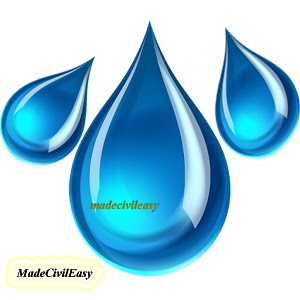Measurement of Fluoride in Water
THEORY: Fluoride is essential for human beings to fight against dental caries. The desirable concentration is 1 mg/l, if it is more than this it proves to be harmful. Fluoride concentration of more than 3 ppm is not allowed in potable water in any case. As per W.H.O the fluorides should not be more than 1.5 ppm. Actually the higher concentration of fluoride leads to the discoloration of teeth known as dental fluorosis. The more dangerous is the deformation of the Skelton. In Rajasthan about 25 districts are fluoride affected and some of them are severely affected. The fluoride in the ground water of Nagaur District is so high (5-10 ppm) that above 50% of the people in one particular area (known as ‘Banka Patti’ ) are with distorted Skelton. The name Banka itself means distorted or bent bones. The skeletal fluorosis affects the bones, tendons and ligaments followed by pain and ultimately leads to the seizer of neck and other limbs movement. So it is very important to check the fluoride concentration in drinking water.
The actual laboratory determination is done by spectrophotometer but it can be done at student’s primary level by visual comparison also. In this test we use the combination of zirconium and either alizarin dye or SPADNS dye. This combination gives a reddish colour and the colour produced is commonly referred as a ‘lake’. The intensity of colour produced is reduced if the amount of zirconium present is decreased.
Equipment and Reagents
(i) Nessler tubes
(ii) Standard Sodium fluoride solution
Dissolve 0.0221 gm of dry sodium fluoride in distilled water and make upto 1000 ml. One
ml of this solution contains 0.01 mg of fluoride as F.
(iii) Acid zirconium alizarin reagent
Dissolve 0.3 gm of zirconium oxychloride or 0.25 gm of zirconium oxynitrate in 50 ml of distilled water. Dissolve 0.07 gm of alizarin sodium monosulphonate in another 50 ml of distilled water and add the later solution to the zirconium solution calmly with continuous stirring.
(iv) Sodium thiosulphate solution (0.1N)
Dissolve 25 gm of Na2S2O3 . 5H2O in distilled water and make upto 1 litre.
Procedure
(i) The sample should be free from chlorine, it should be dechlorinated with sodium thiosulphate solution before use.
(ii) Take 1, 2, 3, 5, 7, 9, 11 ml of standard sodium fluoride solution in six Nessler Tubes.
(iii) Add 5 ml of acid zirconium reagent in each Nessler tube.
(iv) Add 5 ml of acid zirconium reagent in each Nessler tube containing 100 ml of sample.
(v) Mix thoroughly and compare the colour developed after one hour with the six tubes.


2 comments
commentslorry water supply in chennai anna nagar
ReplyThanks for sharing this blog. visit for tanker lorry water supply in chennai anna nagar
Reply